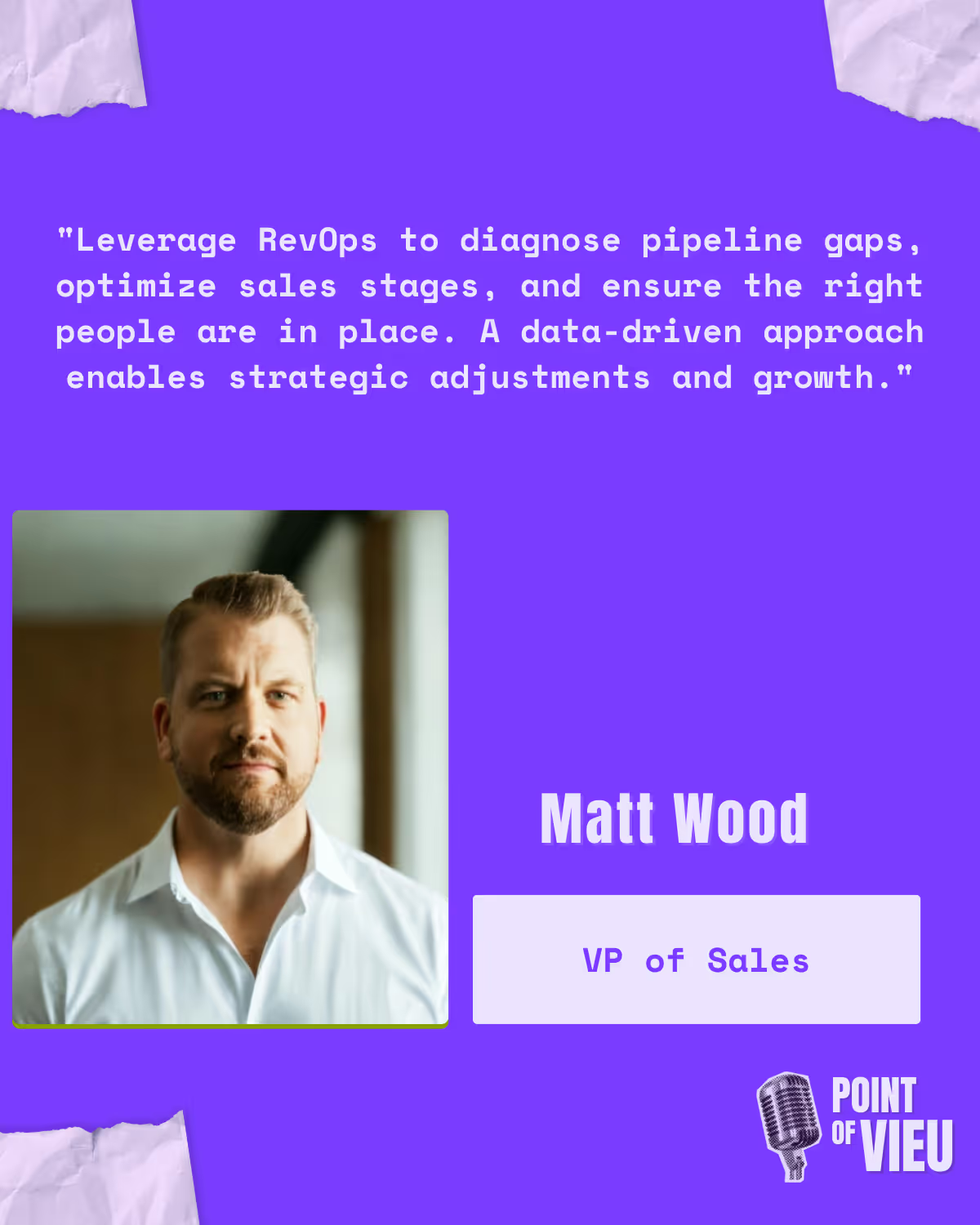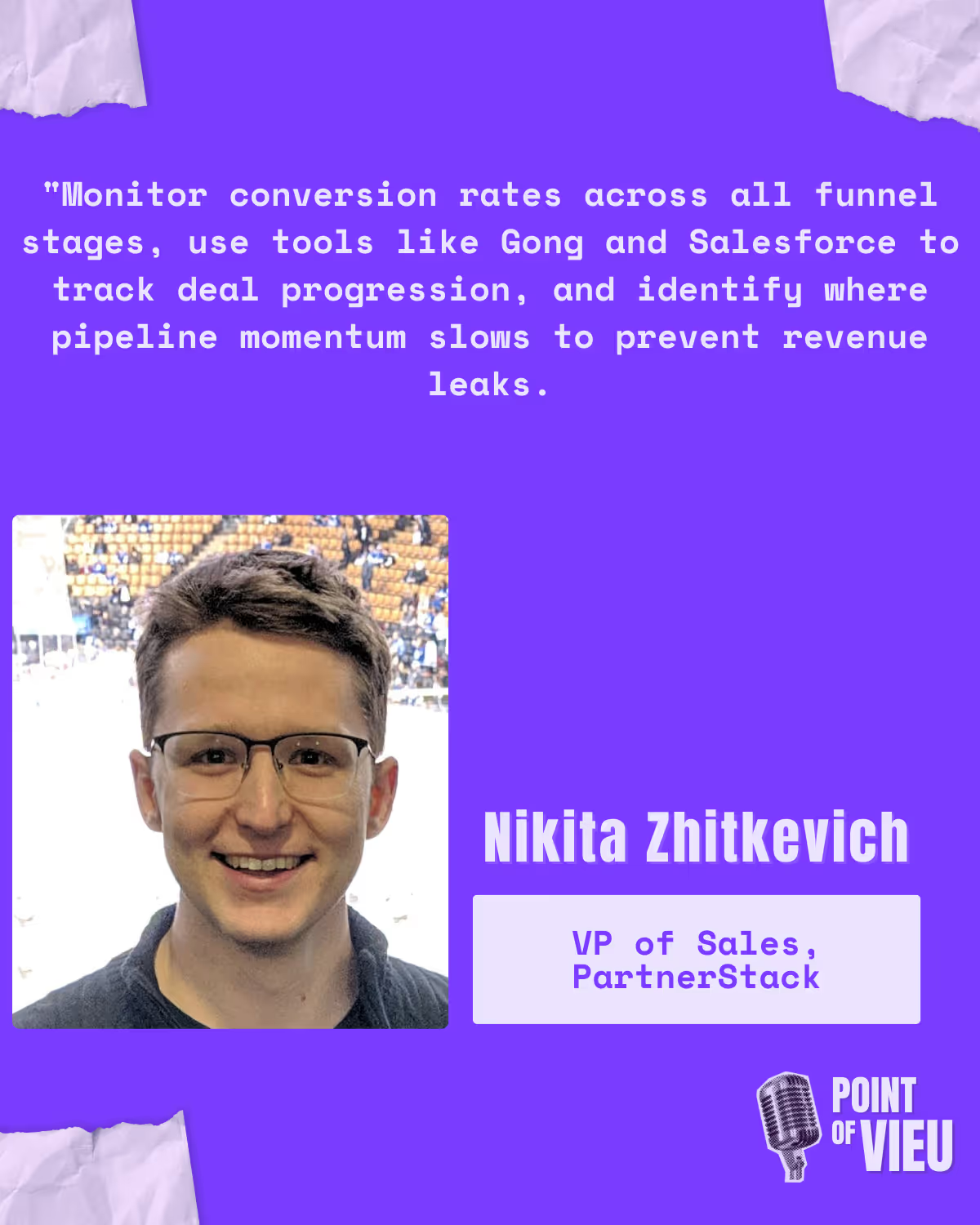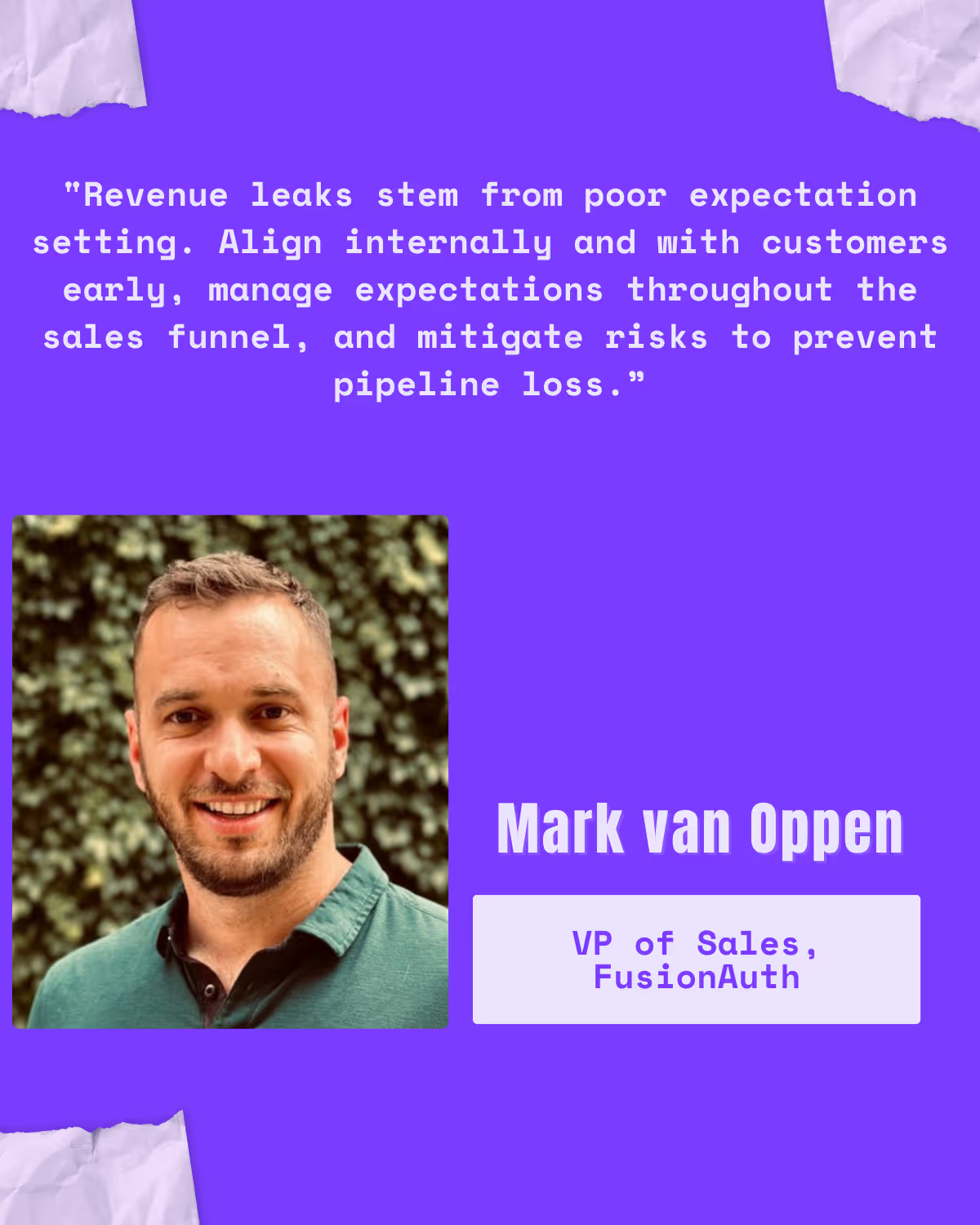In our latest episode, industry experts discuss a pressing issue: CROs report losing an average of 16% of their revenue to leaks throughout the sales pipeline.
They share actionable tips on identifying and addressing these leaks effectively, emphasizing the importance of examining your hiring processes, company structure, and incentive alignment.
The conversation highlights the need for a strong RevOps partnership to analyze performance and continuously pinpoint gaps in the process.
In the previous episodes, we discussed the following:
In the previous six episodes, we discussed the following:
Watch our experts answer the question: "How are you ensuring alignment with buying teams?"
Jeff Kirchick

Jeff Kirchick is the Vice President of Sales at allwhere, an IT asset lifecycle management software company based in New York City with approximately 45 employees. With 15 years of experience in software sales, Jeff has been a part of multiple successful exits.
“First, with revenue leaks, we want to ensure we have customers that are fully adopted. In our business, I think of solving funnel metrics in line with the "revenue bow tie" concept from Winning by Design, a leading revenue consulting firm. Many think of revenue as a one-sided funnel—prospect the lead, close them, and that's it. But in a SaaS business, the other side of the funnel—the customer success side—is where your real business lies. This includes all your recurring revenue, expansions, and growth.
We need to measure these aspects to understand trends. A lot of this comes down to how well we check certain boxes during the handoff to customer success. Often, the answer is no. Sales reps, eager to get the deal across the finish line, may skip steps, which can hinder expansion on the other side of the funnel. The way to prevent this is by having a tight process. If your process is tight, you won't need to go back and fix these issues. Without a tight process, you’ll notice trends among customers who don't fully adopt—they likely went through a rushed sales process, didn’t fully grasp the tool’s value, or lacked sufficient pain implication. Tracking the full funnel—including the customer life cycle, not just the closed won deal—helps diagnose this.
Additionally, you should build out measurable attributes for each client. For instance, at my last company, we measured the digital strategy sophistication of customers. Counterintuitively, we found that the more sophisticated a customer was, the less likely they were to adopt our solution because they had in-house development teams. This influences how we target customers. If we track this as an attribute, we’re less likely to focus on leads that won’t fully adopt or even close in the first place.
So, a lot of this comes down to being data-driven and applying this approach across the full life cycle—not just until closed won, but also across the customer success life cycle.”
Kasey Devine

Kasey Devine has spent the past 10 years in sales, sales leadership, and go-to-market leadership roles. His diverse experience spans multiple verticals, with a focus on SMBs, particularly in human resources, tech, and outsourcing services.
“If you’re going to diagnose the revenue leak, start at the very beginning of your process—how you hired people and your company structure and incentives. That’s usually where it begins. These days, "go-to-market" (GTM) is a trendy term, but no one fully agrees on what it means or what it should look like for every organization. If you have a GTM leader, is that just a fancy title for sales? Or is it about revenue leadership—sales, marketing, enablement, product, and customer success?
I think a lot of revenue leaks happen because of two assumptions. First, leaders assume that what they expect from their teams and employees is clear and aligned with the outcomes they want. Second, they assume that employees are properly incentivized—not just with money, but with the right motivations to do what’s best for the business. In my opinion, revenue leaks are a symptom, not the core problem. The real issue lies somewhere in the chain, from stranger to retained customer—something along the way broke.
If you see leaks in the roof, you don’t tear the whole roof off. You fix the leak, but you also investigate why it happened so you can avoid it next time. Similarly, I believe compensation structures in GTM, sales, and other areas haven’t caught up to reality. They need to be more creative and holistic, focused on overall business success rather than driving toward a single KPI.
Whenever I’ve debated this with peers, I’ve never been able to settle on one KPI that drives everyone effectively. There’s always a trade-off. If you focus solely on revenue growth, you might get sloppy on the back end, which leads to churn. So, instead of trying to fix the symptom, go back and ensure the foundation of your assumptions and GTM approach is aligned. Then, identify the point in the chain were things broke and work from there.”
Matt Wood

Matt Wood has spent approximately a decade in SaaS, playing a pivotal role in scaling revenue growth across multiple organizations within DevOps, cybersecurity, and data observability. His efforts have driven revenue from below $1 million to over $100 million, contributing to four successful mergers or acquisitions.
“It's holistic that these elements are, do we have the right sales stages? Do we have the process in place? Do we have the right people in the right seats, and this is why I think it's also important to have a very strong rev ops partner. That's always by coming to an early-stage company. That's always my first hire, making sure you have someone that is constantly analyzing this from multiple angles to find where the leaks are, how do we fix it, so you can really diagnose and pinpoint gaps in the process.
Here's the gaps in the pipeline we're bringing in, or who's in the seat. So, I would encourage folks if you're not leaning into rev ops to absolutely do that.
As the leader, you want to be the driving strategy. You want to spend a lot of your time recruiting, managing, coaching, and if you can have a person that's in there diving into the data, looking for where the leak is coming from. Then, you can adjust your strategy accordingly to that.”
Nikita Zhitkevich

Nikita is the VP of Sales at PartnerStack, an organization dedicated to helping companies launch and scale their channel and partner programs across the board.
“We’ve always prioritized keeping a close eye on deal progression and movement across different stages of the funnel. Our focus has been to consistently improve the conversion percentages between each stage. For example, while there’s usually a predictable percentage moving from a marketing-qualified opportunity (MQO) to a sales-qualified lead (SQL) early in the cycle, we’ve concentrated on enhancing the conversion rates between other critical stages, like from an SQL to a sales-qualified opportunity, and from there to the value and benefits stage.
We’re taking a holistic view of the funnel, asking ourselves, "Are there areas where we can improve these conversion rates and help existing customers move through the funnel more easily?" The goal is to accelerate their journey onto the platform. To achieve this, we’ve implemented strong internal processes, leveraging tools like Gong for call coaching and reviews, and pipeline management through Salesforce to track the movement of accounts between stages.
By maintaining this overview of the entire pipeline, we’re able to spot potential issues. Whether it’s a deal that’s moving too slowly or a need for more responsiveness to certain individuals, we can identify where we’re losing pipeline momentum and act accordingly. This reporting and analysis give us a clear view of where adjustments are needed to drive better results.”
Mark Van Oppen

Mark Van Oppen is the Vice President of Sales at FusionAuth, a leading customer identity and access management (CIAM) solution. FusionAuth works with some of the world’s largest brands and supports vast end-user populations, helping its clients manage secure and efficient login flows.
“I have a slightly different perspective on this than most. I see revenue leaks as a symptom, not necessarily something caused by a gap in the system or process. A revenue leak, or loss of pipeline or customer value, often comes back to expectation setting.
Expectation setting applies even within roles on the same team. For example, between an account executive and a solution engineer, we have a living document in our organization to ensure alignment. This way, there's no miscommunication between these two roles, which need to work in partnership to close a deal.
The same principle applies when setting expectations with the customer throughout the sales funnel. In early qualification, you need to understand the success criteria you must solve for, and then march toward that, staying disciplined about alignment with those expectations. The unknown represents risk, and I believe this revenue leak or loss of pipeline value stems from unknowns. If you set expectations properly and manage the project from the initial conversation through delivery and onboarding, your expectations will be well set, and you’ll minimize revenue leaks.
If there’s churn outside of your control, you should know about it well in advance so it’s not a revenue leak—you’ll know it’s coming, and you can act. To me, expectation setting is foundational for both new and existing customers.”
Conclusion
Revenue leaks in the sales pipeline often signal deeper, systemic issues. They rarely exist as isolated problems. Preventing leaks demands a holistic approach. Companies must set clear expectations at every stage of the customer's journey. They should also adopt a data-driven, and full-funnel mindset.
Strong alignment across teams is essential to avoid missteps. The right hiring processes and proper incentive structures play crucial roles as well. Companies should build a strong RevOps partnership.



